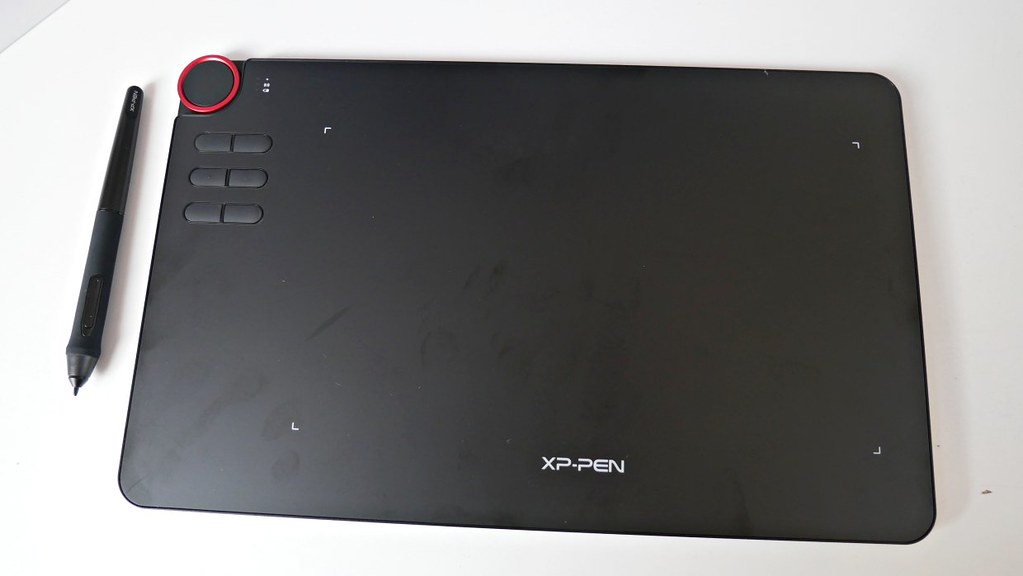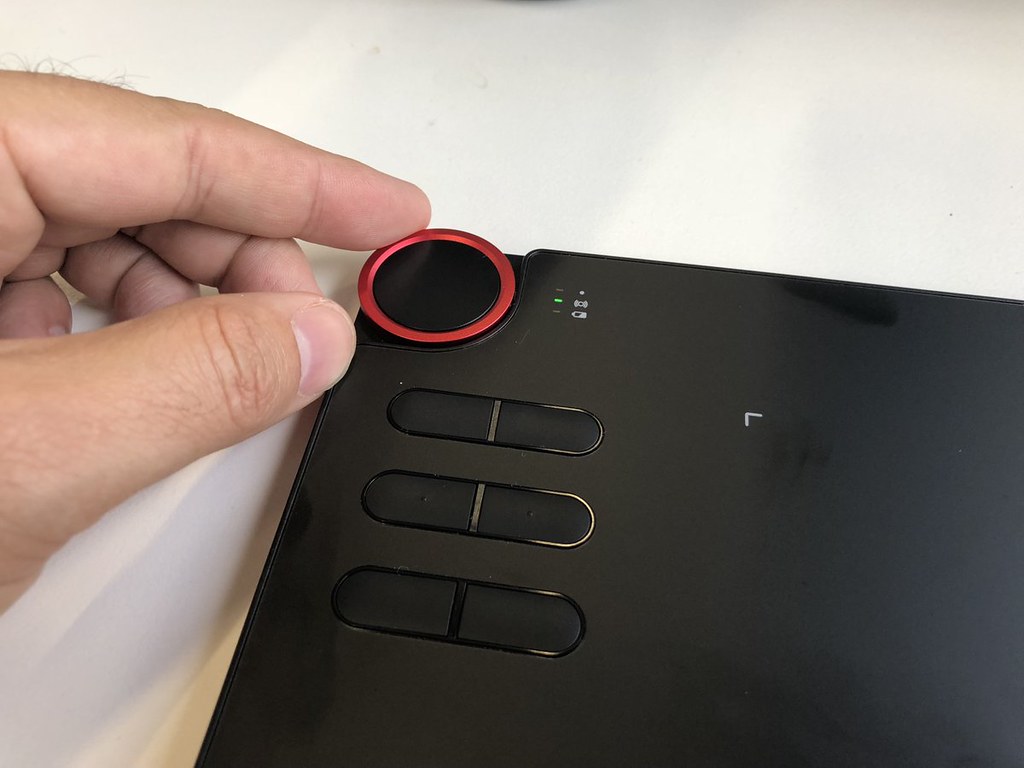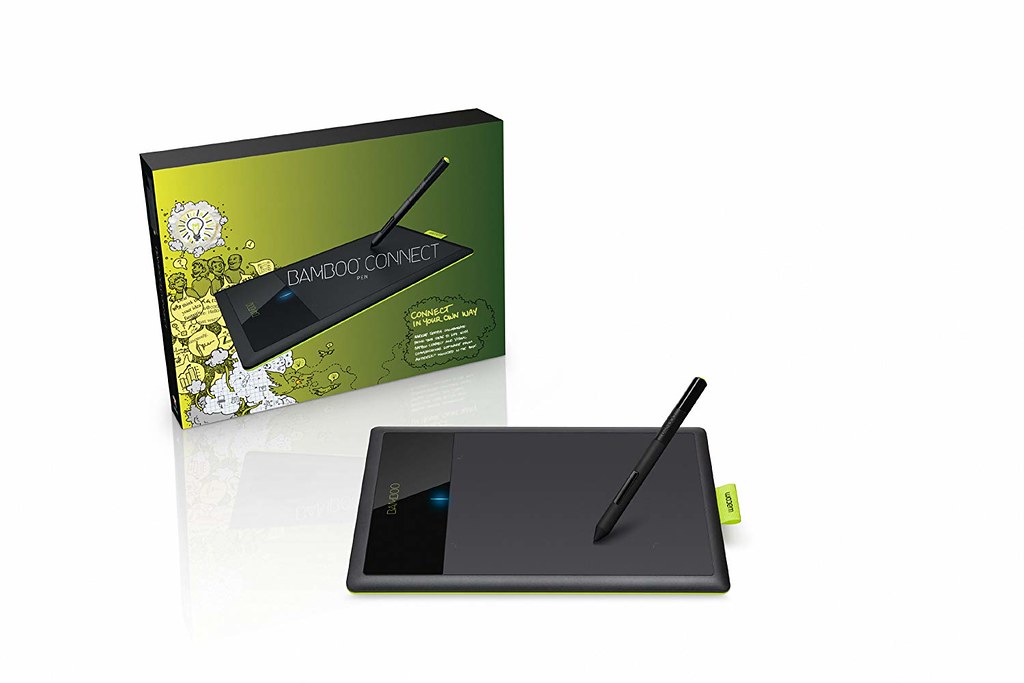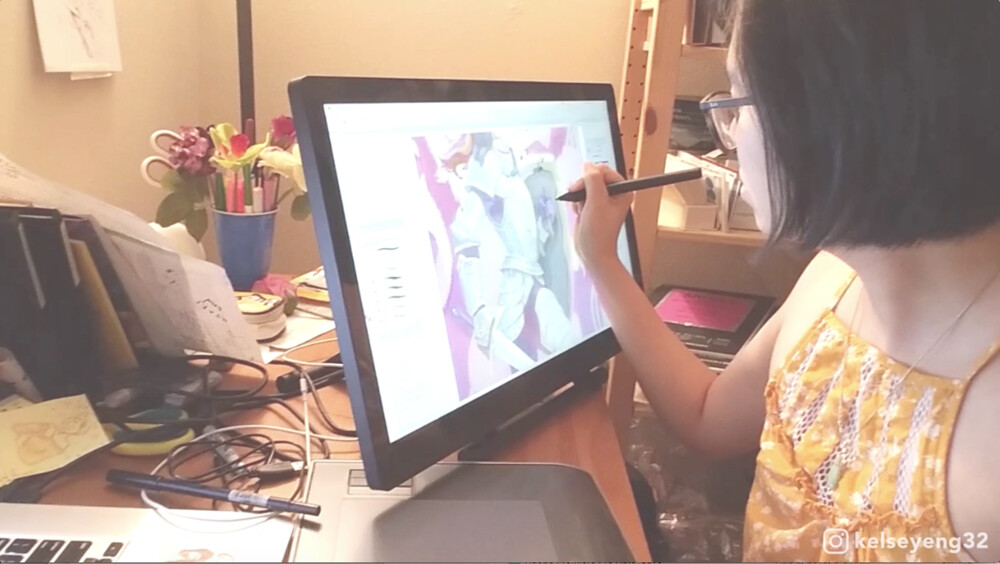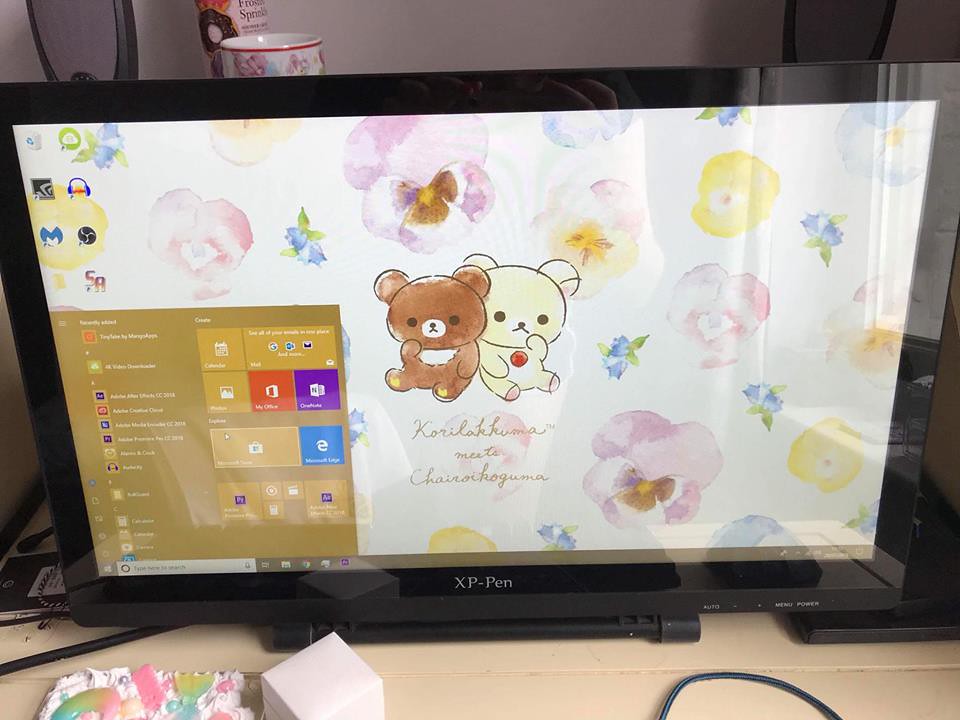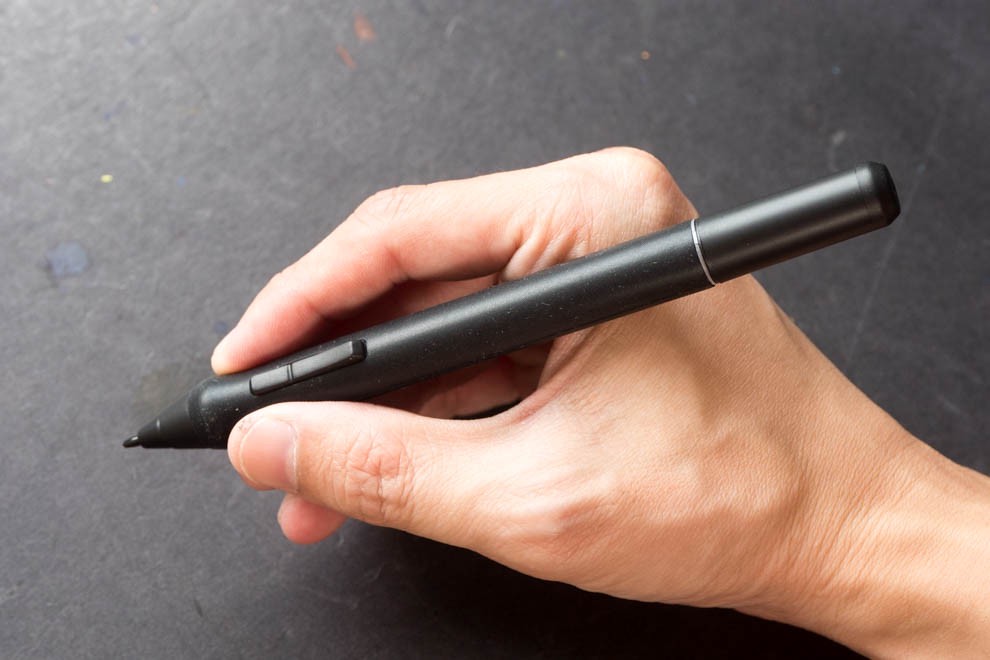Unleash your creative side with these stunning tablets. Combining the flexibility of freehand drawing and precision of digital design, these amazing tools are only limited by your imagination. So if you are looking for a Christmas gift or something , you are sure to find something that fits your needs and budget.
This is the season to paint with pixels… here are some nifty gift ideas for the tablet-totin’ creative type in your life (and maybe that someone is you!) With a specially designed Christmas and New Year gift pack, the easy-to-carry Artist 12 / DECO 02 /Star G640S makes an ideal gift choice for your beloved ones. The XP-Pen drawing tablet / monitor will mimicking a comfortable sketching experience on paper.
what is the difference of Christmas version and the normal deal product ?
The only difference of the Christmas version and the normal artist 12 is that the Christmas version has more includes like the protective case and key ring.
One of the leading rivals to the famed and revered Wacom tablets is XP-Pen. Who the heck is XP-Pen? XP-Pen is a company born in the great tech-giant country, China. XP-Pen’s office is in ShenZhen, China (near Hong Kong). Their offical website is https://www.xp-pen.com .The XP-Pen Graphics Tablets is the perfect option for an affordable graphics tablet.
XP-Pen’s Star /DECO /Artist series tablets launched them as actual competitors to Wacom, yet at a quarter of the cost. You can’t argue with that.
I’ve owned and used Wacom’s Intuos 3 medium, the wired and wireless versions of the Intuos 4 medium, and Wacom’s Bamboo CTH models. Each of these confirmed Wacom’s excellence, both with hardware and drivers. Though Wacom sells the most tablets, they’re not the only company that sells excellent tablets.
If you’re in the category that’s looking to purchase a Wacom Bamboo tablet - don’t! There’s no reason for the Bamboo to even exist when there’s a far superior model for a comparable price. If you’re thinking about buying the Bamboo - buy the XP-Pen instead.
XP-Pen Artist 12 Tablet with screen Christmas Gift Pack

The XP-Pen Artist 12 is ergonomically designed with adjustable stand and anti-slip rubber cover, you can adjust the screen according to your needs and comfort no matter you’re standing or sitting, the XP-Pen Artist 12 lets you draw your art without any kind of discomfort. The 11.6-inch screen on the front produces good brightness and contrast with real colors so that you can draw your art even more accurately. Moreover, the 1920 x 1080 pixels of resolution with 16.7M color support is enough sharp to meet the requirements of artists. With pressure sensitivity of 8192 levels, you can draw a variety of lines. For instance, if you apply more pressure then it will render a thicker line. This is really a good feature especially in a tablet for artists.
The XP-Pen Artist 12 is compatible with all versions of Windows and Mac operating system and works with most of the software like Adobe Photoshop, Illustrator 3D Max, AutoDesk Sketchbook, Corel Painter, Autodesk MAYA, ZBrush and many more. Hence, there’s no need to worry about compatibility. In the package, along with the device, you will get a screen protector, 1 pen, 8 replacement nibs, 1 USB cable and other necessary cables. All in all, the XP-Pen Artist 12 is a complete package of features and is also one of the best tablets for artists, designers, architects, and students who are expecting a good value for their money.
Hardware Specifications of XP-Pen Artist 12
Display Area: 11.6-inch IPS Display
Pressure Sensitivity: 8192 levels
Connection: USB-C
Resolution: 1920 x 1080 Full HD Resolution
Response Time: 14ms
Support Color: 16.7M(RGB 6-bit data + HiFRC data)
Colors: 72% NTSC Color Gamut
Visual Angle: 178°
Report Rate: 266 PPS
Keys: 6 Shortcut Keys and 1 touch bar
Where to get One: https://www.storexppen.com/goods/activity/id/68.html

Artist 12 Customer reviews :
I have a tendency to ramble, so bear with me.
I'm already fairly familiar with XP-Pen products (I have the Artist 16 Pro, and will be trying out the Decon 02 soon so I can better teach my nephew to use it). I dare say, I prefer this over my Artist 16!
•The smaller size makes it much easier for me to lug around, it takes up less storage space (I have no desk to leave the 16 on).
• It has a great look, feel and weight to it; for the price, I'm blown away. It looks more costly than my 16!
• Screen is clear and sharp. The 16 has the same amount if pixels spread out on a larger space so it looked a tiny but fuzzy.
•I love that the cords all plug together vs three separate cords like the 16; that drove me nuts.
• The track pad is amazing. I honestly didn't think it'd speed up my workflow nearly as much as it does.
• The pen nibs seem sturdier than the 16s pen; I see absolutely no sign of wear after using it all day, which I did on the 16. The nibs also don't wobble which is great.
• The matte surface shows no sign of scratching so far, but we shall see in a few months. My 16 has a lot in the center, though they aren't visible while the screen is on.
Cons
My only con's so far, are with the darn pen.
• there's only one button, and it's recessed into the pen; you can't feel where it is, you have to pause to find it.
And to note, there is no stand for this; that is sold separately.
XP-Pen DECO 02 Christmas Gift Pack

Well, if you’re just starting with digital painting and looking for a drawing tablet to hone your drawing skills, then the XP-Pen Deco 02 is probably the best in the segment in terms of features and pressure sensitivity. Yes, the XP-Pen Deco 01 can detect pressure sensitivity up to 8192 levels which is indeed a very good feature for users to draw varying width of lines and enhance their creativity. Moreover, the active area of 10 x 6.25 inch offer enough space to draw on which lights up at night so that you can draw conveniently even in dark conditions. The Deco 02’s thickness is only 8 mm which also doesn’t weigh much making it easy for you to throw it in your backpack.
The XP-Pen Deco 02 is designed with both right and left-hand users in mind, there are basically 6 express keys and 1 touch ring on the left which help you maximize your workflow and delivering the most ergonomic and convenient platform to draw on in its segment. The pen that comes with the package is battery-free so you don’t need to charge it as there is no way of running out of battery. However, the tablet needs to be connected to your PC or laptop via USB Type-C cable. Moreover, the quick toggle button onboard lets you switch between pen and eraser instantly. Overall, the XP-Pen Deco 02 is one of the best value for money drawing tablets offering a package of features at an extremely affordable price of $90 which even slightly expensive Wacom Intuos misses out.
Hardware Specifications of XP-Pen Deco 02 Tablet
Active Area: 10 x 5.63 inch
Pressure Sensitivity: 8192 levels
Resolution: 5080 LPI
Report Rate: 266 RPS
Connectivity: USB Type-C
Pen Battery-Free Pen with 8 Nibs
the stylus have digital eraser
Newer drivers for the Deco 02, compatible with Windows 7/8/10 and OSX 10.10
Where to get One: https://www.storexppen.com/goods/activity/id/67.html

DECO 02 Customer reviews :
Deco 02 by Xp-pen a great wacom alternative.
Where can I start? first off, I like this one, which is going to be my new tablet for my day job. The box looks nice and have that look that you wouldn't' expect to find on a graphic tablet made in China. The box is sturdy, firm and feels like it can withstand almost everything and very well designed by the way. what's on the box is what really matters.
A Deco 02 tablet that comes with a ring or roller wheel to set with the last shortcut key and has a lot of built-in functions. This roller wheel will save a lot of time for you because when we artist tend to calibrate sizes of the brush or doing the zoom in and out, this roller wheel comes very handy ( way better than shortcut keys). Also it comes with a sort of lid or cover for the ring made out of rubber, which is nice to the tact and easy to handle. The pen is a passive pen that won't need any charge and very ergonomic and light ; even this time xp pen put an eraser on the pen...that is cool. I remember that the old wacoms had it, not anymore though on the more advanced models. This eraser will save you time since you don't have to use the switch buttoms on the pen to change from brush to eraser. The pen comes with a practical pen holder, very hard and durable, it will old the pen on your desk, also carries the pen nibs and the pen. I wish my artist 15.6 should have had one of those.
When it comes to performance, this tablet is way better than my old wacom. It can register 8,192 levels of pressure sensitivity that helps a lot when you are doing digital sketching, painting and inking on many programs, I have tested it with Photoshop, Krita 4.0 and Sketchbook Pro. It works like a charm with all the pressure needed in all of them.
The only cons is with Krita, that sometimes start behaving erratic but that is not only with xp-pen, also has been reported with the latest wacom's. I think this tablet is great for everyone who is on graphics with a budget and also for professionals digital artists like me that are looking for something smooth and precise that will perform great and would not put you on a serious debt. As an additional, the pressure sensitivity and the tablet drivers are so easy to calibrate that it works right out of the box on my 12gb old Imac 2011 with OSX High Sierra... Yep this tablet will do its duty very well.
XP-Pen Star G640S Christmas Gift Pack

XP-Pen Star G640S drawing tablet comes with 6 programmable Express Keys to create shortcuts, easy to setup; Compatible with Windows 7/8/8.1/10 and Mac OS X 10.8.0/later versions.
8192 Levels of Pressure Sensitivity: Resolution 5080 LPI, Report Rate 266RPS.
The graphic tablet can compatible with most currently available drawing software: Adobe Photoshop, Adobe Illustrator, Adobe Fireworks, Lightroom and so on. One year warranty.
A mouse alternative, Precise pen control Can be used for osu! Digital art creation, annotating in PowerPoint slides . game, document signing, causal art work editing, inking, sculpturing, and more. It's good choice of Christmas Gift for children and adults.
Active Area: 6 x 3.75 inch, Easily fits into a laptop case pocket or in a briefcase, portable carrying on the go or on a trip.Signature Pad: widely applied in banking and finance, retail, telecommunications, healthcare,government, tourism .
Where to get One: https://www.storexppen.com/goods/activity/id/66.html
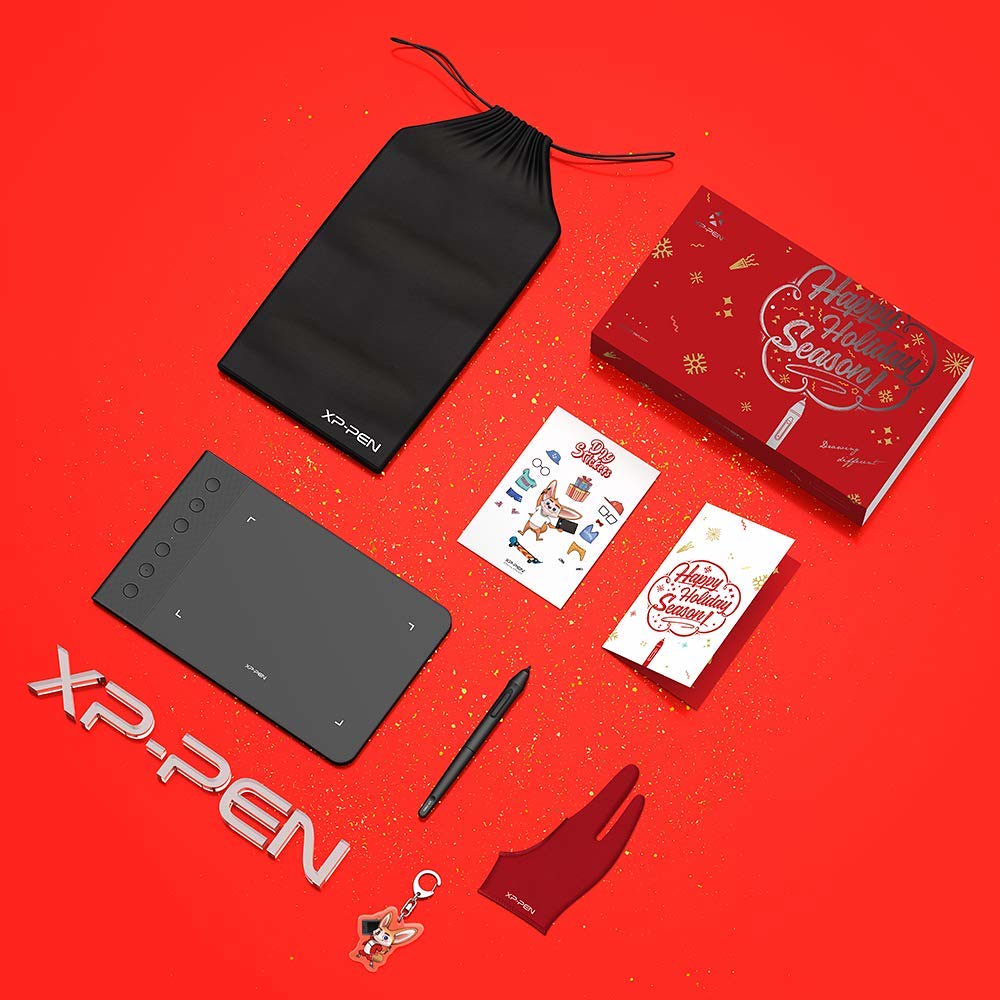
Star G640S Customer reviews :
This is a great graphics tablet for this price range! Here's why:
*It's bigger than it looks, but small enough to not take up a lot of desk space if your space is limited. I was able to draw using this tablet with no issue, the surface area is large enough to capture larger strokes of the brush.
*The pen pressure is sensitive enough to work well with watercolor and paintbrush tools on graphics programs so that you can still achieve a gradient or tapered brush look. The pressure is also adjustable so that you can adjust for heavy-handedness if need be.
*Express buttons -- I'm used to the express buttons from my personal Wacom tablet(this is a gift for someone) and it's nice to see them in this tablet, they're great to create shortcuts when working.
*It takes very little time to get used to the way the pen works.
*Great starter tablet or tablet for casual users who don't want ti spend 100+ on a tablet they aren't using everyday.
**CAUTION** the pen can lose pressure because it registers your hand if you are someone who touches the side of your hand to the tablet when writing or drawing(like I do), I recommend adjusting your hand position when using this tablet or getting a half glove
More notice
The line of XP-Pen tablets sold at offical store seems focused on clients from the West, specifically even the U.S. The box and instructions come labeled in English, they ship to the U.S. for a very reasonable shipping cost. And a minor detail, they shipping worldwide , in australia ,USA,Europe, they have office and warehouse, the product ship from local warehouse , then you can get it within one week .
Going above and beyond, XP-Pen also responds personally to questions, usually within one or two days at most, and they respond in near perfect English.
NOTES & SUGGESTIONS Pressure sensitivity problems? I found that if I started the graphics program (ie, Manga Studio) before I plugged in the tablet, the pressure sensitivity didn’t work. To fix this, I simply had to close down the program, plug in the graphics tablet, wait a short moment, then restart the program – always plug in the tablet before starting your drawing program.
Driver issues or tablet glitches? First, uninstall All other tablet drivers if you have any installed. Second, make sure you download the most recent and appropriate driver. Third, restart your computer. Fourth, plug in your tablet before you start your graphics program.





